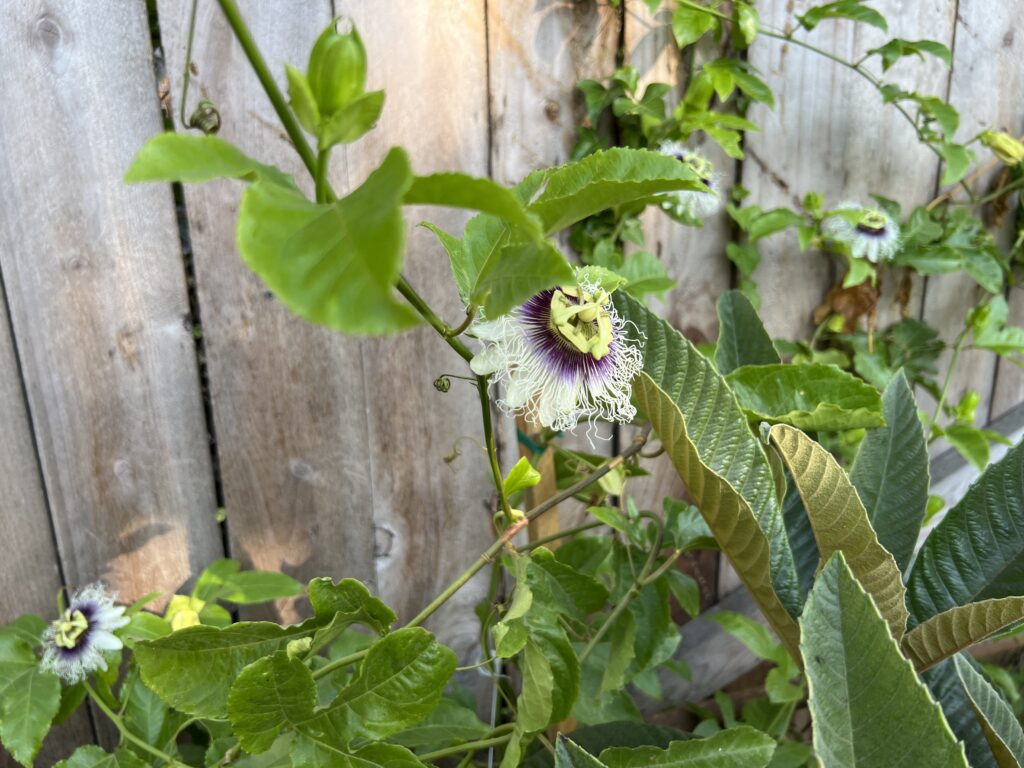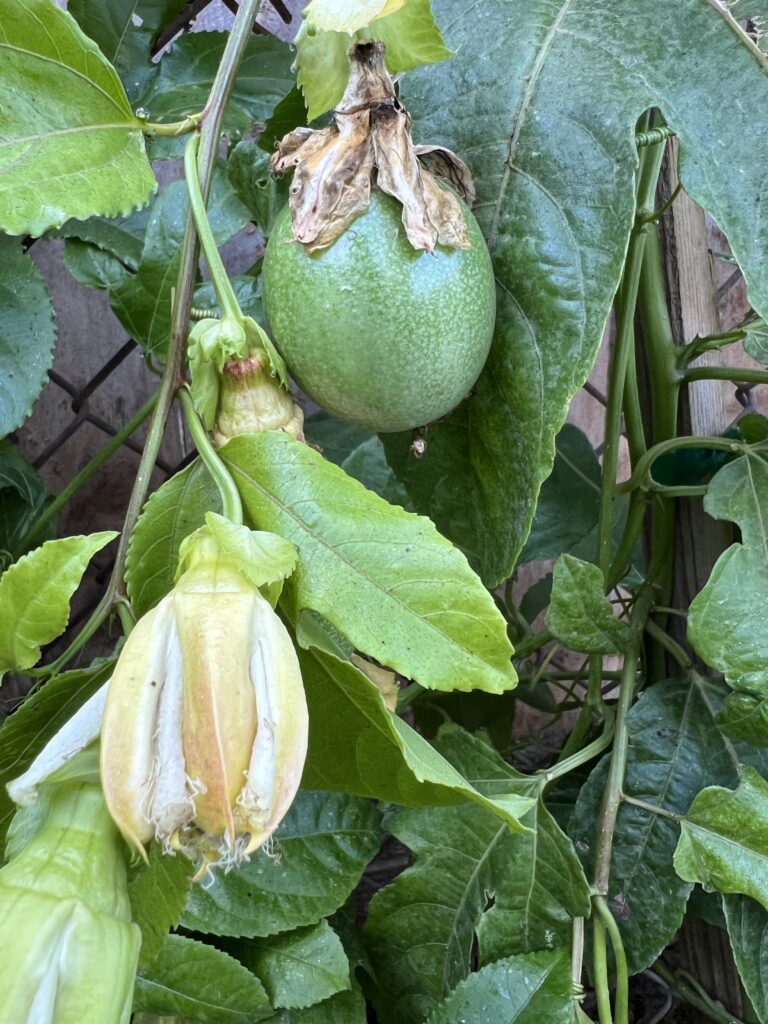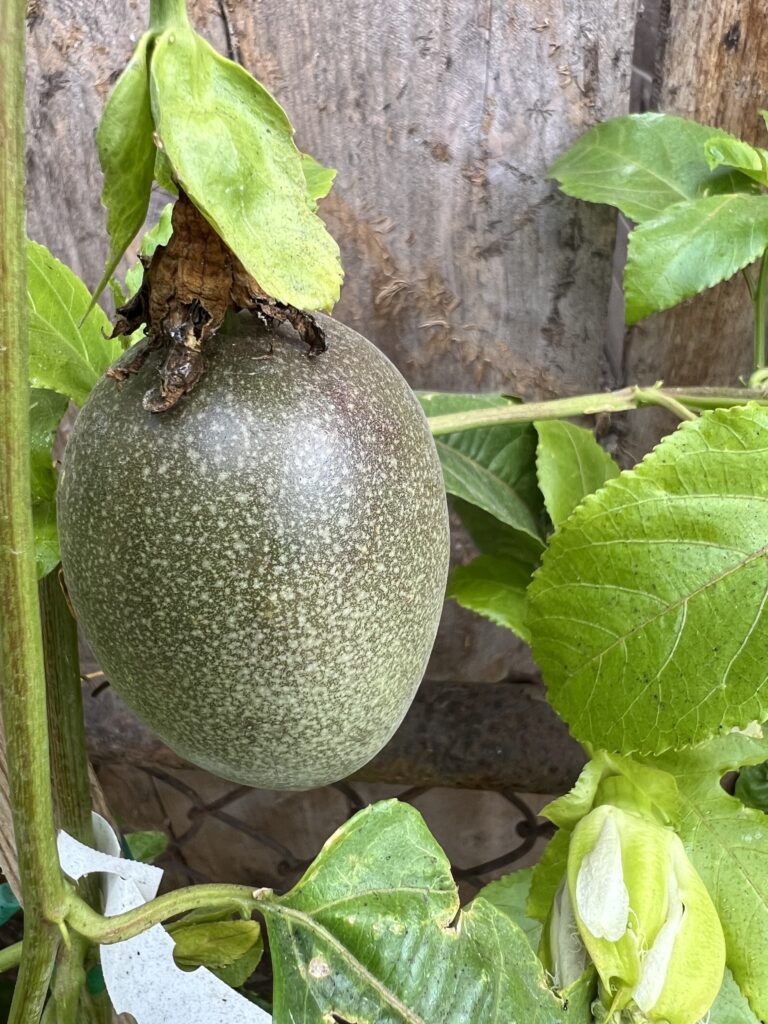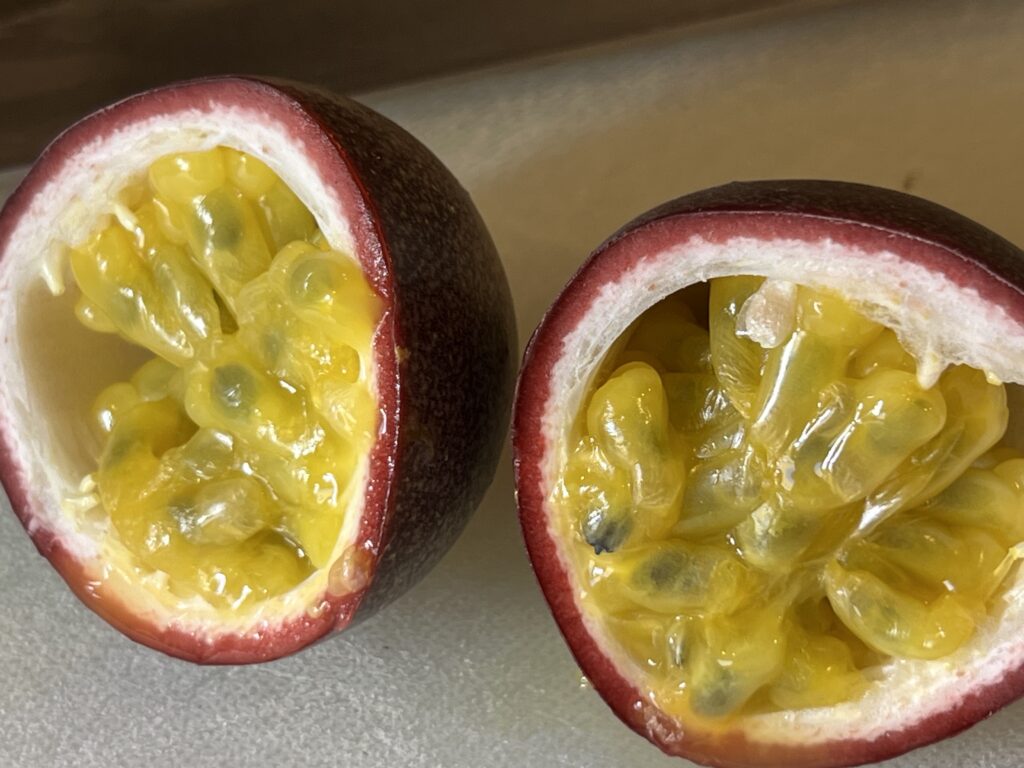Growing passion fruit at any time of year can be a wonderfully delicious addition to big and small gardens. Their vines love climbing fences, trellises, and tall poles. They bring instant green to the eye and wildly vivid flowers when they start to bloom. So, if you are a fan, you’ll want to consider adding this plant to your fall or spring plantings. Read on for tips on how we are incorporating growing passion fruit into your small Venice Beach cottage front garden.
Choose Your Vines Wisely
When growing passion fruit, you have to remember how big and long the vines will get once they are fully mature. Reduce that number to three or four rather than bringing in six plants to cover a small front garden wall. Why? Three healthy plants are going to produce more than 100 passion fruit. They are also going to vine up the walls and over fences. While you certainly should prune the plants, even small vines will grow quickly. You don’t want to order too many plants and have to deal with vines choking off other plantings, plants not getting enough sun, or producing so much fruit that no amount of salsa or margaritas will allow you to eat or share it all.

Growing Passion Fruit from Young Vines
We chose pretty young vines to start growing passion fruit because we put them in at the end of July. These were vines with purple fruiting flowers, so they were already technically being planted later than recommended. Yellow-flowered vines tend to bloom from April through November, while purple-flowered plants are more likely to start blooming in March. If you have blazing hot summers or early winters, you may see blooms fall or a slowing of bloom production during the hotter months. We are so close to the coast here in Hardiness Zone 11a that we have more flexibility. We have cooler temperatures all year but don’t deal with frost. Because we chose young vines with blooms already on them, we got blooms despite an unexpected heatwave, and we are getting fruit now.

How Long Does It Take for Passion Fruit to Ripen?
It typically takes between 70 and 80 days for passion fruit to ripen after it has been pollinated. That can feel like an eternity, but they will eventually come. If they have a great source of natural light and some hot days during their ripening phase, you could see your timeframe shortened a bit.
Don’t Expect Passion Fruit to Ripen Off the Vine
The downside of having young vines is that they aren’t very strong or established yet. So, we do find that as our bigger fruit gets heavier, they are starting to fall to the ground. This poses a problem as un-ripened passion fruit (usually bright green) does not ripen off the vine. The good news is that if it has started to go purple (or red, if you have that variety), even if it is just a blush of purple, you can put it under grow lights to finish sweetening and softening the fruit. So far, we have only had to do that with two pieces of fruit, but we were thrilled that they were still edible.

Can You Help Pollination?
Yes! One of our wonderful neighbors with a thriving wall of passion fruit suggested that manually pollinating some wild blooms could guarantee a better pollination rate. This is particularly important when we enter a period of the year (like the late summer/early fall) where you don’t see nearly as many bees as we did in the spring. You can use clippers and a brush to help with pollination, or just use your hands. We twisted off one of the stamens from the bloom and then brushed it against the pistils. There are three pistils inside the passion flowers, so you have some options, or you can try to pollinate all three. It’s best to encourage bee pollination by luring them in with surrounding pollinator-friendly plantings. But if that isn’t an option due to budget or climate, hand-pollinating is an excellent alternative.
Blooms Don’t Last Long
You’ll see the fabulous, alien-like blooms start to open in the early morning. Most will close before dusk. So, if you are trying to hand-pollinate when growing passion fruit, you must keep an eye out for the blooms to open. It’s a spectacular sight to see!
What Does Passion Fruit Taste Like?
Passion fruit changes its flavor profile as it ripens. It starts relatively tart, but the longer it ripens on the vine, the sweeter it becomes. It’s a unique taste, but for me, it’s closest to a combination of a ripe red berry, citrus, and pineapple.

Best Ways to Eat Passion Fruit
Andy loves scooping out the pulp and seeds and eating passion fruit fresh off the vine. It’s a complex, rich taste that can be very appealing without any preparation. But it does lend itself to some terrific recipes. For example, our neighbor is making passion fruit cider right now, and we cannot wait to try it. Salsa, chutney, puree, and juice are all great options. We know someone who makes terrific passion fruit margaritas at Halloween near the end of her harvest. And I just saw a recipe for caramelized passion fruit and lime tart from the BBC Good Food website that looks too amazing not to try. Stay tuned!
Are you ready to take the plunge and start growing passion fruit? I’ll be sure to update you with some of our favorite recipes as our harvest grows.
For more gardening and food/wine articles, visit us here and here.
